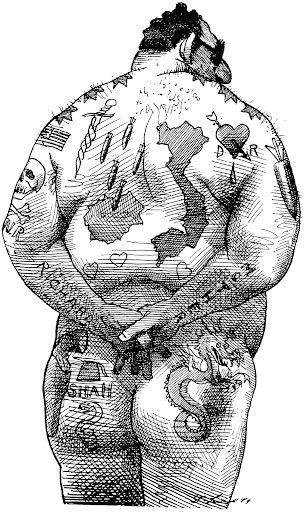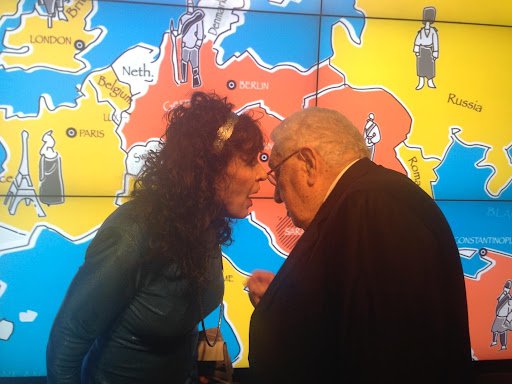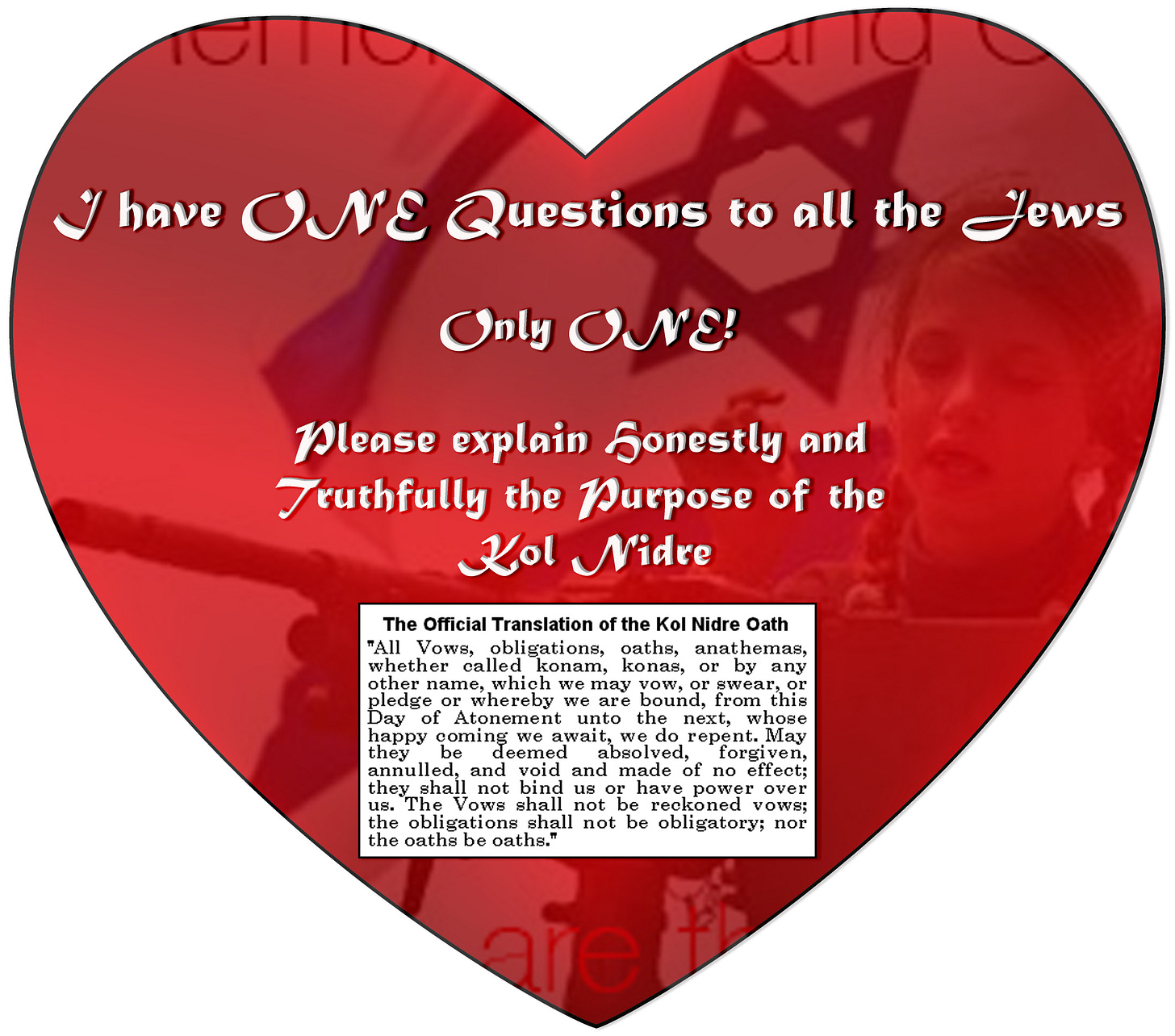Henry Kissinger: The Back Story
An art director confronts the soon-to-be centenarian in the flesh.

***
On May 27, 2023, former U.S. Secretary of State Henry Kissinger will have lived one hundred years. For half of those years, he’s haunted my life.
On a Tuesday lunchtime in 1979, my third day as the New York Times’s op-ed art director, Sydney Schanberg and I had just settled down on the burgundy benches of Sardi’s, the theater-district restaurant behind the Times, when Syd told me, “I don’t believe in capital punishment, but I’d go anywhere to see Kissinger hanged.”
“That’s nervy of you to say,” I told Syd, “about a Nobel Peace Prize laureate.”
Syd had worn jeans when he reported from foreign wars. Now, as the metro editor at the Times, he wore a black turtleneck, hounds-tooth sport jacket, and smartly cropped beard. I, a California naïf newly arrived in Manhattan, wore loose hippie hair and sandals.
Syd’s blunt disclosure was triggered by the freshly drawn Kissinger portrait I’d pulled out of my bag. As a drawing, it was a far cry from the celebrity caricatures that surrounded us on Sardi’s walls, and in my effort to get it into the paper, I’d put up a fight—a fight I lost an hour ago when my editor killed the image. Now that it wouldn’t be published, I had to show it to Syd.
It was Syd who reported Pulitzer-winning dispatches on the genocide that followed the United States’ carpet bombing of non-combatant Cambodia. The brutal onslaught—an early use of B-52 Stratofortress bombers—that killed hundreds of thousands of Cambodian civilians was the brainchild of Henry Kissinger.
Richard Nixon’s chief of staff, H. R. Haldeman, recorded the unprovoked attack in the White House log, abbreviating Kissinger as “K” and President Nixon as “P.” Once the first bombs fell, Haldeman wrote, “Historic day. K’s ‘Operation Breakfast’ finally came off at 2:00 p.m. our time. K really excited, as is P.” The next day he wrote, “K’s ‘Operation Breakfast’ a great success. He came beaming in with the report, very productive.”
To hide the top-secret assault from Congress and the American people, Kissinger fabricated an elaborate, dual reporting system of false flight patterns. His scheme informed pilots that their target was Vietnam but diverted forty-eight of their planes across the border, where they dropped 2,400 tons of bombs on neutral Cambodia. When a leak to the Timesexposed the truth about the raids—Kissinger codenamed them “Operation Menu” and continued the barrage with “Lunch,” “Snack,” “Dinner,” “Supper,” and “Dessert”—my head throbbed with images of bleeding, fleeing, falling Cambodians.
While he was growing up in Germany, Kissinger was viciously beaten by Hitler Youth gangs. How, I marveled, could he then rejoice in the slaughtering of innocents? How could he name lethal explosives after nourishment?
I had commissioned the Kissinger portrait to illustrate a doozy of an op-ed by William Pfaff, whom Arthur Schlesinger, Jr. would call“Walter Lippmann’s authentic heir.” Pfaff’s first sentence landed a knockout punch: “Kissinger was ultimately a failure as Secretary of State.” The scathing attack continued: “Mr. Kissinger left Washington with the United States weakened. There were curiously few successes. Yet Kissinger … is taken as a success. It is a striking case of style over substance.”
When I contemplated how to illustrate Pfaff’s harsh text, the unsparing work of artist David Levine came to mind. Levine, whose caustic caricatures appeared in The New York Review of Books, jumped at the chance to draw the illustration and delivered a masterpiece. Tattooed on the über-diplomat’s back are the atrocities that studded his career. Shoulder hairs become Arabic script; “RICHARD” shares billing with “MOTHER” on the forearms; and the Shah of Iran, a holstered gun, and a Chinese dragon adorn the cheeks. Between Kissinger’s bent arms, Vietnam darkens, and bombs fall on Cambodia. It was those bombs that most shook me.

Since the image shamed America’s premier diplomat on a par with Pfaff’s prose, I felt sure it would impress my new boss, the legendary Charlotte Curtis. I grabbed the illustration, swept out of my office and up a fake marble staircase, and stood waiting at Charlotte’s door for her nod.
A petite person with a bouffant do, Charlotte’s winsome wardrobe included lace collars and petticoats. She flew to Ohio every weekend to see her surgeon husband, whom she called “Dr. Hunt.” Yet Charlotte’s low, raspy voice startled, and her traditional femininity betrayed a searing mind.
In her acclaimed reporting days, Charlotte filed merciless social commentary. Now, as op-ed editor and the first woman on the Times’s modest masthead, her young deputy handled the day-to-day while she put Brzezinski on hold to answer Mandela’s call and Halston waited in the lobby to take her to lunch. Yet Charlotte had sole authority to sanction illustrations.
The David Levine Kissinger illustration commissioned by the author in 1979.
“That’s awful!” she sneered when I presented the Kissinger drawing.
“But look at Pfaff’s text!” I countered.
Charlotte wrinkled her nose, clenched tight her normally fluttering eyelids, and spun around in her chair.
“We could crop it mid-dragon,” I offered.
“That’s not it,” she snapped. “It’s the excessive midsection flesh.”
Since when is Kissinger slim? “This picture will resonate with millions of readers,” I insisted.
Charlotte’s manicured hands lit another Virginia Slim. Gazing into the distance, she inhaled. As she slowly exhaled, I bit my lip. Then Charlotte announced, with withering finality, “It’s a cheap shot.”
For me, the illustration was the opposite of cheap.
When Kissinger and Nixon were escalating things in Vietnam, I stood on the Berkeley railroad tracks waving a white flag in hopes of halting the troop trains that were taking my peers to fight an unwinnable war. I’d become friends with Ron Kovic, who entered the Marines as a gung-ho volunteer and left a paralyzed peacenik, eventually telling the story in his 1976 autobiography Born on the Fourth of July. To me, Levine’s Kissinger image seemed so right: the black-inked back of a man who turned that back on his crimes. But by assuming the image would fly, I’d miscalculated. Provocative visuals were the op-ed department’s trademark, yet I’d gone too far. It was my third day, and I’d already screwed up.
When the Times inaugurated its Op-Ed section in 1970—the term is merely printer’s jargon for the page opposite the editorial page—I was in California. Having recently returned from a Fulbright year in Munich (ninety minutes by train from Kissinger’s birthplace), I shared the Oakland block I lived on with members of the Black Panthers and worked my first publishing job as Rampartsmagazine’s art director. Ramparts, recallededitor Peter Collier in Time magazine, was “the only New Left periodical that could penetrate middle-class households.” It was a magazine “printed on heavy, glossy stock with classy graphics that looked good on a Danish Modern coffee table.”
The cover stories I designed for Rampartsincluded the burning of the Bank of America, the subversive silkscreens of Cuban artists, and the reportage of Christopher Hitchens, which recorded evidence of “Kissinger’s crimes against humanity.” Some of the atrocities Hitchens detailed were criminal; some were simply immoral. Many were committed in concert with America’s ruthless client regimes.
Kissinger took a passionate, personal interest in promoting despotic governments throughout the globe. “I’ve always acted alone,” he told journalist Oriana Fallaci. “Americans like the cowboy who leads the wagon train . . . the cowboy who rides all alone into the town . . . . This amazing, romantic character suits me precisely because to be alone has always been part of my style or, if you like, my technique.”
In South Asia, Kissinger blessed Pakistan’s massacre in Bangladesh and greenlitIndonesia’s slaughter of the East Timorese. Most disastrously, Kissinger instituted a policy of unconditional support for the Shah of Iran. We’re still paying the price of his all-out embrace of Iran, which laid the groundwork for crisis in the Middle East. The Shah told Kissinger, “We are looking for a navy. We have a large shopping list.” To the delight of America’s military and arms merchants, Kissinger enabled Iran to possess the largest navy in the Persian Gulf, the largest air force in Western Asia, and the fifth largest army in the world.
To me, Levine’s Kissinger image seemed so right: the black-inked back of a man who turned that back on his crimes.
When Iran entered a border dispute with Iraq’s Saddam Hussein, Kissinger, as a favor to the Shah, recruited the Kurds to fight the Iraqis. Once the dispute was resolved, Iraq attacked the Kurds, killing thousands, as they tried to flee. The devastated Kurdish leader, beseeching the United States to honor his loyalty, sent his plea directly to Kissinger: “We feel, Your Excellency, that the United States has a moral and political responsibility towards our people.” Instead of honoring the Kurds’ faithful execution of his orders, Kissinger betrayed them. Cutting off all aid, he decreed, “Covert action should not be confused with missionary work.”
When the Chilean people, in a democratic election, seemed certain to vote physician and socialist Salvador Allende their president, Kissinger became unglued. He demanded that Nixon authorize $10 million to stop Allende from coming to power. When Allende was elected, a diabolical Kissinger plot to destroy Chile’s fledgling democracy became covert U.S. policy. Enlisting the CIA, Kissinger orchestrated a siege of Chile’s presidential palace where Allende was sitting—an attack that set the palace aflame and left Allende dead. Bloodthirsty Augusto Pinochet became dictator of Chile, and in June 1976, at the height of the murderous repression that ensued, Kissinger told him, “We are sympathetic to what you are trying to do here.”
During Argentina’s “Dirty War,” Kissinger eagerly backed the brutal military junta that was fighting against its own people. The junta targeted those citizens who were working to restore democracy, yet they “disappeared” thousands of random, apolitical Argentines, as well. In his zeal to support Argentina’s tyrannical regime, Kissinger flew to Buenos Aires to congratulate the dictatorship on “an outstanding job in wiping out terrorist forces.”
Disappearing is worse than dying. The military tortured their victims, loaded them onto planes, and, with “death flights,” tossed them alive into the sea. Then the military destroyed all records of their existence. Without a bone or document to prove they once lived, the junta could claim they never did.
On one morning during the war, my Argentine husband, Horacio, was walking near his home when seven soldiers assaulted him and dragged him onto a truck. Though he had since grown a beard, the only ID Horacio carried showed him clean shaven. The discrepancy would have sealed his fate were it not for a friend who chanced by. From the truck’s flatbed, my husband, surrounded by dozens of the soon-to-be-disappeared, called out to his friend, “Roberto, quick! Run to my house and ask my mother for my journalist ID. The one with a beard.”
Heinz Alfred Kissinger, an introverted, fifteen-year-old refugee when he arrived in America, transformed himself into a suave player. He got people to refer to him as “Doctor Kissinger,” and his enormous charm captivated politicians, celebrities—and especially journalists. Wooing the Washington press corps with his wit, he would utter in a trenchant Teutonic accent tidbits like, “The illegal we do immediately, the unconstitutional takes a little longer.”
Journalist Barbara Walters once asked Henry’s brother, Walter, why he, Walter, lacked an accent. “Because I’m the Kissinger who listens,” Walter replied.
Hearing Kissinger’s voice brings back my unknowable Viennese father. Both he and Kissinger were young Jewish émigrés who came to America, earned PhDs, and despite never losing their pronounced German accents, taught in universities. My father didn’t listen either.

Courtesy Jerelle Kraus
The author’s 2014 confrontation with Kissinger.
The women on Kissinger’s arm during his Don Juan bachelor decade included Jill St. John, Candice Bergen, Shirley MacLaine, and Diane Sawyer. He frequently dated Liv Ullman, who called Kissinger “the most interesting man I have ever met.” Had Kissinger’s boss possessed his high-flying emissary’s charm, he might have survived Watergate. But the contrast between Kissinger and Nixon couldn’t have been starker. Before his wife Pat would date him, square, self-conscious Dick drove her to dates with other men.
I experienced Nixon’s social awkwardness up close. In August 1982, about a decade after he “resigned,” I illustrated an op-ed essay he wrote for the Times on deténte. On the day it was published, a phone call stunned me: it was Nixon. “I admire your drawing in today’s paper,” he said. “I’d like to have the original.” Intrigued, I agreed to bring him the drawing. The next morning I found myself suddenly alone with Nixon in a vast federal office, except for a secretary who sat silently in a distant corner. I searched for something positive to say.
“Thank you for opening China,” I blurted. “They’ve invited me on a cultural tour.”
“I’m going to China next week,” Nixon said.
“Then why don’t I go with you!” I joked.
Nixon curled his shoulders to his ears and stared at the floor for the longest time. Finally, he raised his head and mumbled, “You see, Jerelle, uh, uh … Pat’s not going.”
Kissinger would haunt me again in 2014. I was reading the 2001 book A Cook’s Tour: Global Adventures in Extreme Cuisines, and Anthony Bourdain’s words had hit me hard: “Once you’ve been to Cambodia, you’ll never stop wanting to beat Henry Kissinger to death with your bare hands . . . and you will never understand why he’s not sitting in the dock at The Hague next to Milosevic.”
During the same 2014 week I read this passage, Kissinger spoke at a 100-year anniversary commemoration of Archduke Franz Ferdinand’s assassination, the catalyst for World War I. I arrived at the remembrance to see Kissinger in a gray suit among four onstage panelists. Behind them was a colossal map of 1914 Europe painted in primary colors. France and Russia were yellow, the seas blue, and Austria-Hungary and the German Empire were red.
Upon the event’s conclusion, fellow former Secretary of State Madeleine Albright and the other panelists joined the audience at an elaborate buffet. Kissinger, ever the cowboy who rides alone into town, started toward the back exit. A throng of reporters and photographers rushed toward him. I did too. When he was about to duck out, I jumped onto the stage and addressed him in German. Hearing his native tongue, Kissinger swiveled to face me. Wikipedia lists Kissinger’s height as 5’8”, but at 5’4” I felt taller, which emboldened me.
Looking into the eyes of a war criminal who has not once faced the bar of justice, I asked, “Do you feel guilty?”
Kissinger glowered at my brazen effrontery.
Quickly, I pulled a book from my bag and offered it to him. Kissinger ignored the book, elbowed through the stage’s bulky black curtains, and vanished. Alas, he never saw his crime-emblazoned back, which finally found publication on the cover of All the Art That’s Fit to Print (And Some That Wasn’t): Inside The New York Times Op-Ed Page. But now’s the perfect moment to send it to him. It’ll make a great centennial gift.
Happy hundredth birthday, Henry!


No comments:
Post a Comment